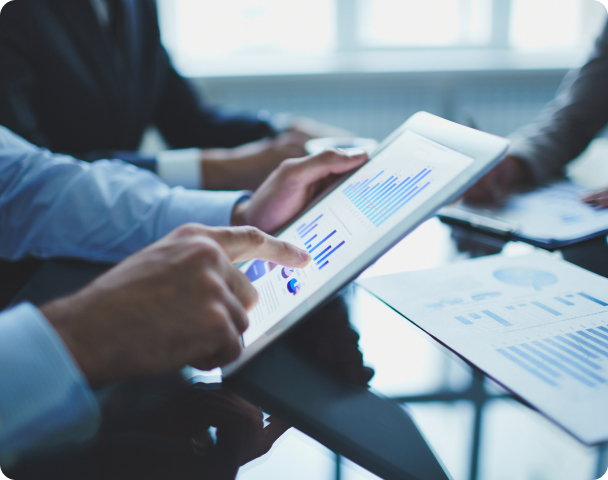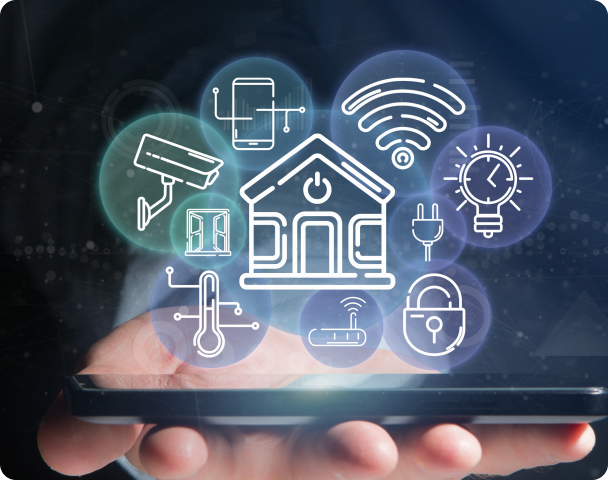How IoT and Big Data might have helped against Covid-19 but were denied the chance
What the coronavirus pandemic has taught us about the importance of alignment between modern technologies, state legislation, and forward-thinking healthcare development in order to effectively fight off critical disease outbreaks
The new coronavirus outbreak has become a wake-up call for entire nations. It turns out that no healthcare system, however advanced, can withstand a sudden surge in the number of patients who all require in-hospital treatment. It has also become evident that commonly enacted preventive measures across Europe, Australia, the USA, and other parts of the world have been hole-ridden from the very beginning, not to mention disastrously late. Unfortunately, despite a strong pace of innovations in IoT, Big Data analytics, and artificial intelligence (AI) over the recent years, these technologies played an embarrassingly small role in mitigating this public healthcare crisis and simply weren’t used where they were needed the most.
Were we able to use the vast potential of modern smart medical devices, personal trackers, mobile screeners, geolocation apps, and AI-enabled video surveillance solutions more effectively to keep the outbreak at bay? Yes and no. In the event of a highly contagious disease outbreak, such as Covid-19, it is important to instantly shift from fragmented use of these technologies on a case-by-case basis to a mass-scale and well-orchestrated solution that involves everyone. We had the power but failed to use it effectively.
For example, one of the methods that Chinese authorities used to impose curfews was tracking a person’s location via their phone, which also helped tracing their possible social contacts. What if they had been able to distribute an application like that to everyone in the danger zone immediately upon the discovery of the first few cases? Another option for tracking could have been wearable devices distributed under the state healthcare security program and used for critical event management by collecting personal location and health data as well as retransmitting crucial information to their smartphones. Enabling this type of technology for the general public is well within our reach, but it was never a priority. It would have also been considered an outrageous infringement of personal privacy in modern democracies, and thus had never been thoroughly thought of. Now it is clear that the economic and social consequences of an unknown and lethal virus are likely to far exceed the cost of such preventive healthcare and may well be worth lifting some data privacy rules during emergency situations.
In addition to tracing the spread of the new coronavirus within local communities, which was one thing we might have been better prepared for, there’s also a glaring problem of the virus being able to migrate so easily from one country to another. We learned our lessons and equipped airports with strong security to protect against terrorism but scanning people for health issues turned out to be a much greater challenge. It was done manually and many people with the virus still got through. Now if you don’t have any real means of tracing their social contacts except collecting their phone numbers and asking to self-isolate for a couple of weeks, letting them in so easily was a fatal flaw. In this situation, fragmented technology could never turn the tide of events without setting up a centralized, comprehensive solution for managing critical healthcare events in the first place.
What could such a solution look like and what could be the roles of IoT, Big Data analytics, AI, and other technologies? We’ve seen that it took some time for countries battling Covid-19 to set up their centers for coordination and monitoring, but this proved to be an essential measure. In order to act quickly, we should have critical healthcare event management systems on stand-by, ready to be activated in minutes, not days or weeks. They should be deployed in the cloud to allow for on-demand scalability, high-performance data processing, and use of modern IoT and analytics tools. A system like this would serve as an analytical core that processes data coming from IoT-powered devices on the edge, such as personal trackers, cameras, scanners, hospital EMS’, portable testing devices, and gateways.
To be quickly operational, such an analytical system should feature a number of typical out-of-the-box workflows for disease prevention, containment, and mitigation, which are common for many types of emergencies. But it also should feature a data engineering tool for rapid implementation of unique workflows and corresponding analytical pipelines depending on the actual properties of a given pathogen. Such tools are already available on the market. One example is Google’s Cloud Data Fusion that offers a graphical interface for building pipelines and allows data engineers to create their solutions in a manner of minutes or hours. With that in place and once a new threat is identified, it takes a few hours overall to set up the central analytics system along with unique data pipelines that describe necessary rules on how to analyze and respond to incoming data, which devices to use, and how to inform the general public. The picture below demonstrates a broad solution blueprint for a Covid-19-like emergency.

Based on the modern IoT paradigm, a solution like this collects data from devices in the field, analyzes their data, and notifies everyone on everything that they need to know. It also allows devices to communicate with each other for immediate actions. That’s where personal wearable devices and wearable IoT applications may play a crucial part. For example, a person who may have been exposed to the virus would have this information recorded on their wearable device, and that would trigger notifications for others who may come in close contact with that person. It would also serve to ensure that everyone at risk abides by self-isolation rules or other restrictions. It would help run medical tests on the right people at the earliest time, which is another important factor for fighting virus outbreaks in addition to tracing contacts and imposing self-isolation measures. When all social interactions during an epidemic can be automatically traced and analyzed like that, there’s a much better chance to nip a virus outbreak in the bud and control its spread.
We can see now that some countries like China, South Korea or Israel have employed their citizens’ smartphones to enforce self-isolation and trace social contacts faster. In Hangzhou, China, they assign health QR codes to everyone in the city as part of their health surveillance system. These QR codes enforce specific restrictions based on the health status of an individual. Everyone is also required to monitor and record their temperature and update their profile daily in order to maintain their health status level. This approach has reported to be quite effective even though it doesn’t preclude untraceable contacts during the time when a person doesn’t exhibit symptoms. In Israel, the ministry of health has begun sending text messages to people whose phone's GPS placed them near a confirmed Coronavirus patient, ordering them into quarantine.
These measures indicate a much greater positive effect that technologies would have offered if prepared in advance and timely applied. Even these simple and affordable solutions that use smartphone data would have saved many lives if we learned our lessons after the swine flu outbreak in 2009 and acted sooner. Now that in many places the spread of the disease has spun out of control and virus testing kits are at a premium, it is simply impossible to test everyone who’s at risk and act preemptively. Total quarantine is the only fallback scenario we have in this situation.
Speaking of challenges for the use of IoT, Big Data and other technologies during a crisis like we’re having today, there are some major ones. The key question here is how far we are ready to go to save people’s lives. Our experience clearly demonstrates that applying timely restrictions and tracing social interactions are vital and that’s where technology can help. We were late for the current crisis, but we should be prepared for the next one by using our best technologies for our own protection: To summarize on the technical aspects of a potential solution for each country, these are some blueprints:
- Building a centralized critical healthcare event management system that uses cloud and Big Data to orchestrate the operation of diverse medical institutions, databases, medical devices, and personal trackers during a crisis. It should be able to go up and running in minutes, not days.
- Applying AI and neural networks for autonomous event management, including tracing social contacts in real time, predicting further directions of the infection, and calculating effective restriction measures
- Enabling a flexible data engineering engine that allows rapid setup of custom analytics pipelines and workflows depending on the disease specifics
- Connecting hospitals to a central system for fast and automated data exchange during critical events
- Distributing purpose-built IoT wearable devices to the general public or developing similar smartphone applications to be used in certain emergency situations. Wearables have multiple advantages over smartphones because they can be easily worn at all times during a disease outbreak and designed with specific features for guaranteed device-to-cloud and device-to-device communication. Apart from GPS tracking, symptom monitoring, and self-isolation enforcement, another feature can be continuous status monitoring of proximity devices to report if there’s a potential risk traced upon other individuals. You may think of it as a friend-or-foe recognition system using Bluetooth or mobile networks for cross-device communication.
- Real-time, in-detail information about the spread of the disease, including heat maps on your smartphone and risk-free navigation in public places depending on other people’s movement in real time
- Similar devices or mandatory quarantine for people entering the country
- Employing other types of smart devices, including surveillance cameras, portable and mobile scanners, telemedicine devices, etc. to be used if necessary within the centralized critical healthcare event management system.
Alongside strategic adoption of modern technologies, we should effectively address collateral privacy and personal data safety issues. Personal data collection and GPS tracking must be authorized only during the emergency situations, which have to be clearly defined by each country’s legislators. Comprehensive policies should be developed regarding personal data security, limits of use, and post-crisis data cleansing.
Now as we have to face the repercussions of our underpreparedness, it is important that we learned our lessons from the Covid-19 pandemic. We don’t have to be defenseless against virus outbreaks. By tapping into the power of real-time data collection and analytics enabled by IoT, Big Data, cloud, AI, and other technologies, we can bring order to chaos, however unexpectedly it may strike. As soon as we recover from the current crisis, it will be time for us to revisit our healthcare development programs and utilize technology to save lives, our economies, and our sense of security. If we want to keep our global world thriving and protected from external threats, we have to go on the offensive.
Get in touch with us on more IoT solutions
Related Stories
- Business
Business guide to IoT data analytics
As a key part of modern IoT solutions, IoT data analytics enable businesses and IoT enthusiasts to convert data collected from their...






